2024 Honda Talon 1000 Buyer’s Guide
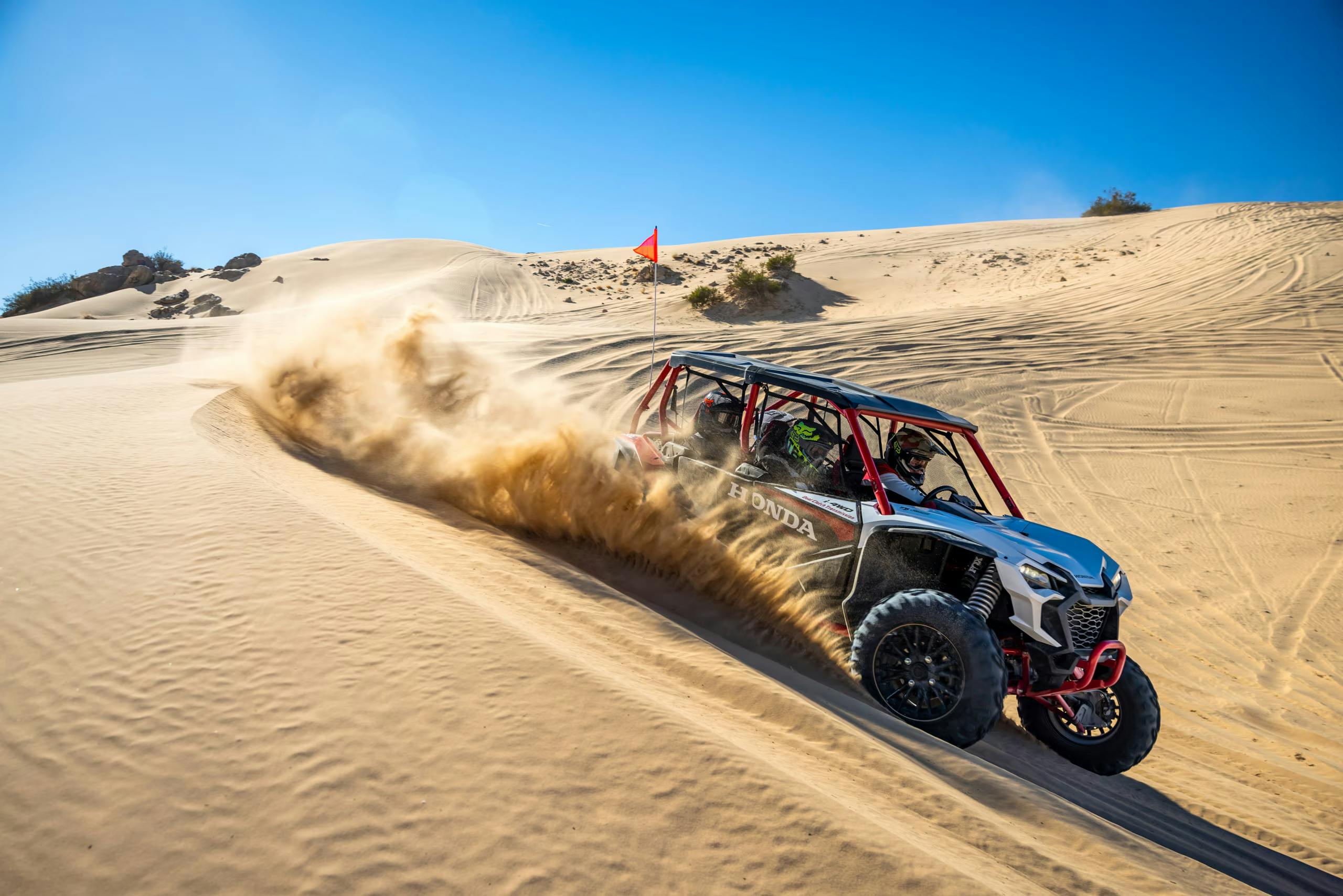
$20,399 MSRP / 105 HP
• Sporty, affordable, durable
• no transmission belt to break / wear out
• old, but still worth a look
The Honda of fun side-by-sides.
Honda is a conservative company, and the Talon 1000 is a conservative rig. These days, most sport side-by-sides offer flashy styling, sky-high power, cabins brimming with space, and a long list of bells and whistles. The Talon has none of that, but we like it anyway.
This is a modestly styled, thoughtfully engineered machine, built to last. It’s an older design, and it won’t wow you with its talents or frills, but it will be fun and dependable for as long as you keep it around.
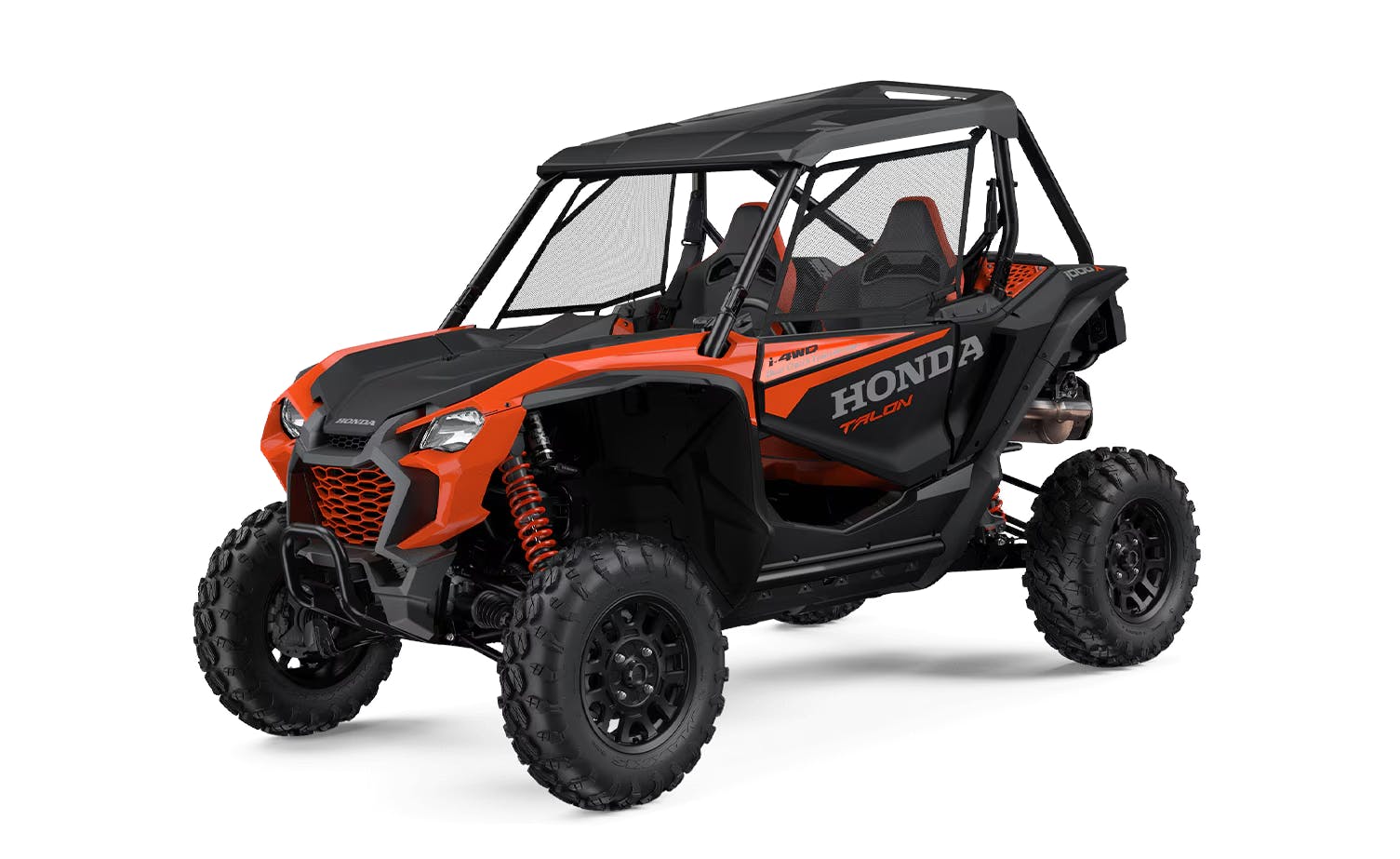
Like most Hondas, the Talon is also a solidly good deal if bought new. The base model, the two-seat, narrow-wheelbase Talon 1000X, cost just $20,399 in 2024. Prices have risen only slightly for 2025.
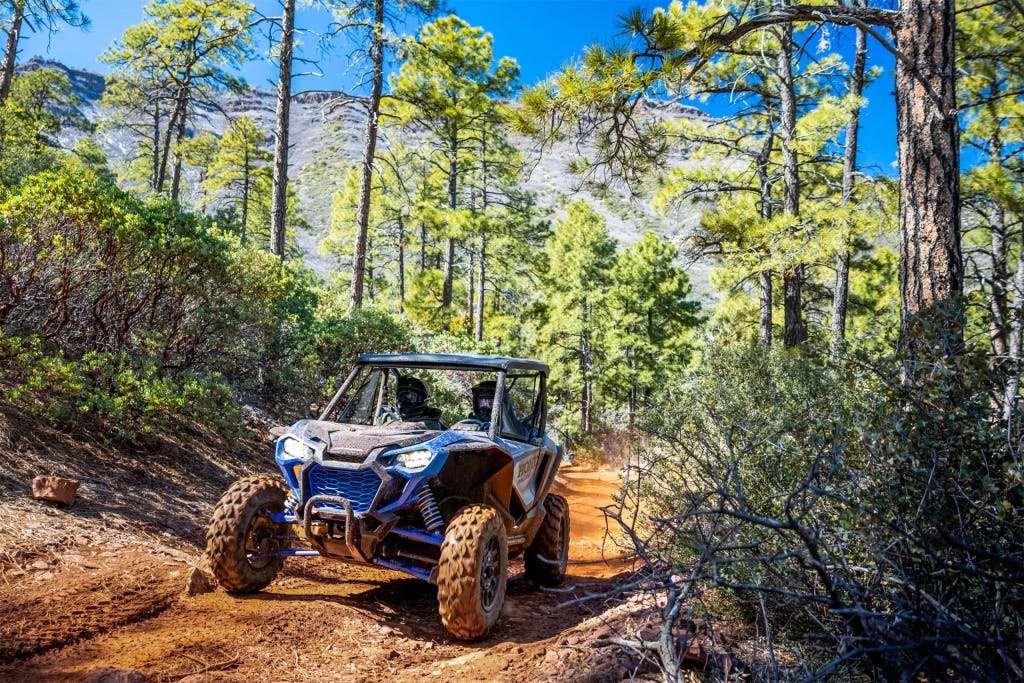
How much power does it make?
The Talon’s liquid-cooled, 1.0-liter parallel twin produces 105 hp. Honda has not released a torque figure for this engine.
All Talon models use a six-speed, dual-clutch automatic transmission—also known as a DCT—exclusively. This gearbox can be run in full automatic mode or shifted manually through a pair of steering-wheel-mounted paddle switches. Talon models with Live Valve suspension feature launch control, which is both utterly useless in real life for real people and also a flat-out spectacular party trick.
The engine is a torquey ripper, more engaging and refined than most twins on the market. The gearbox features similar Honda polish—it’s smooth and fast to shift, and sufficiently capable in full automatic mode that most riders simply shift the lever into High and leave the trans to its work.
Both the transmission and that parallel twin are common across Honda’s powersports lineup. Versions of each are used in both Honda’s Pioneer utility side-by-side and the company’s Africa Twin motorcycle. These are tried and true pieces of engineering, and they promise what Hondas have always promised: longevity, reliability, and a bit more fun than the spec sheet would suggest.
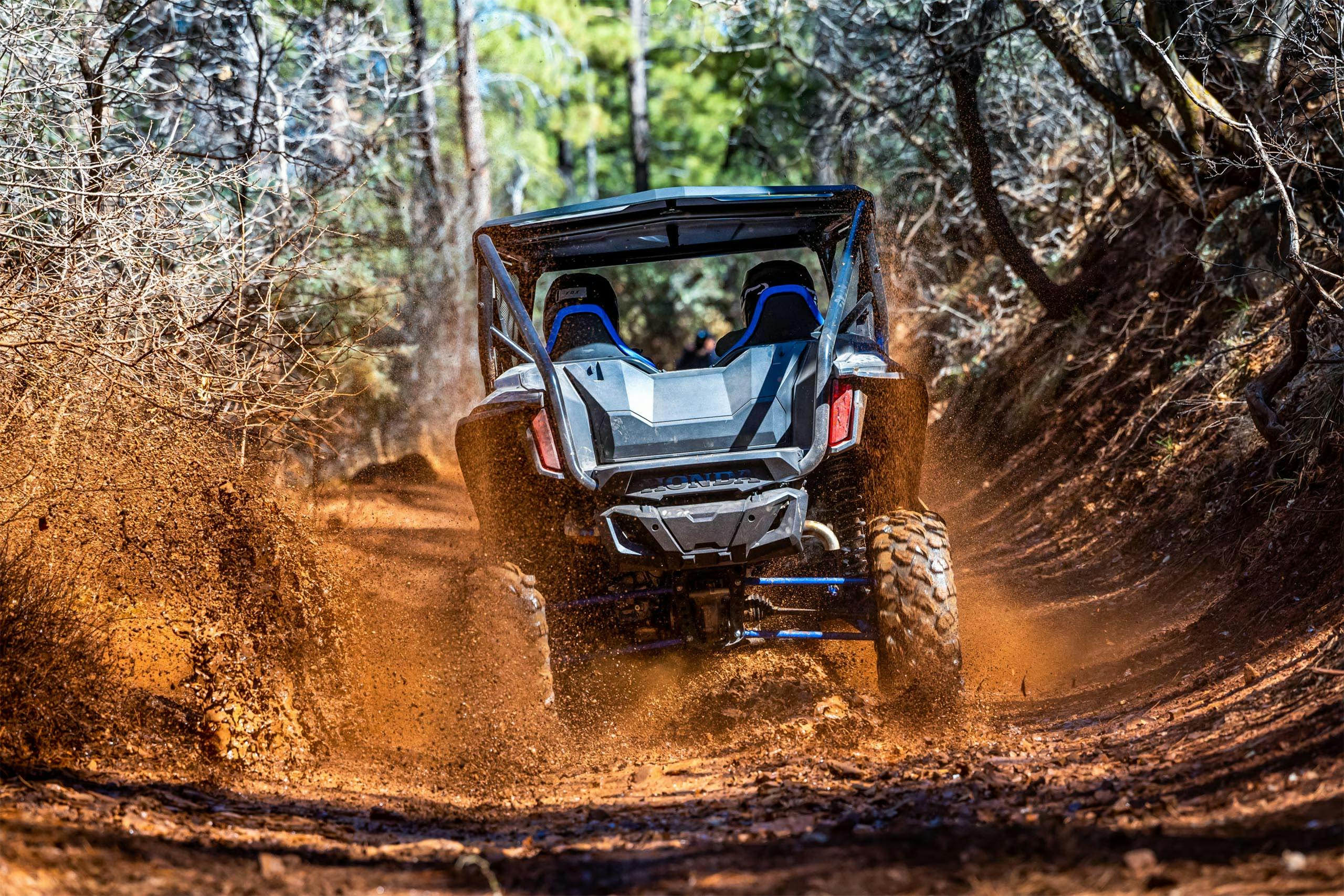
What makes it special?
That promise of longevity and reliability. That incredible gearbox. The access to Honda’s dedicated, robust parts-supply network. (No small thing, given that you can sometimes wait months for parts for a new Can-Am, for example.) The available Fox Live Valve shocks. (Adaptive suspension is an amazing bonus on any rig, but Honda’s setup is particularly dialed.) The promise of decent resale, because Honda. The list goes on.
Don’t discount the little things, either. Twin-clutch transmissions are rare in side-by-sides, for example, with most modern rigs using some form of continuously variable transmission, or CVT. Side-by-side CVTs use consumable external drive belts that wear over time or can break in hard use, stranding you on the trail. With a Talon, that simply can’t happen.
If you’re looking for a machine that will give a lot and ask very little of you, it’s hard to go wrong with a Talon.

Why do I want it?
You prefer “solved” answers and sturdy dependability, not flash. You’re a big-brand fanboi, but you don’t need a Can-Am or Polaris to feel good about yourself. You hate CVTs with a passion. You want a rig with guts, but you don’t need massive power.
Or, you know, you like safety. The Talon is one of the few sport side-by-sides that ship from the factory with window nets. Most people don’t use window nets while riding, but maybe you do?
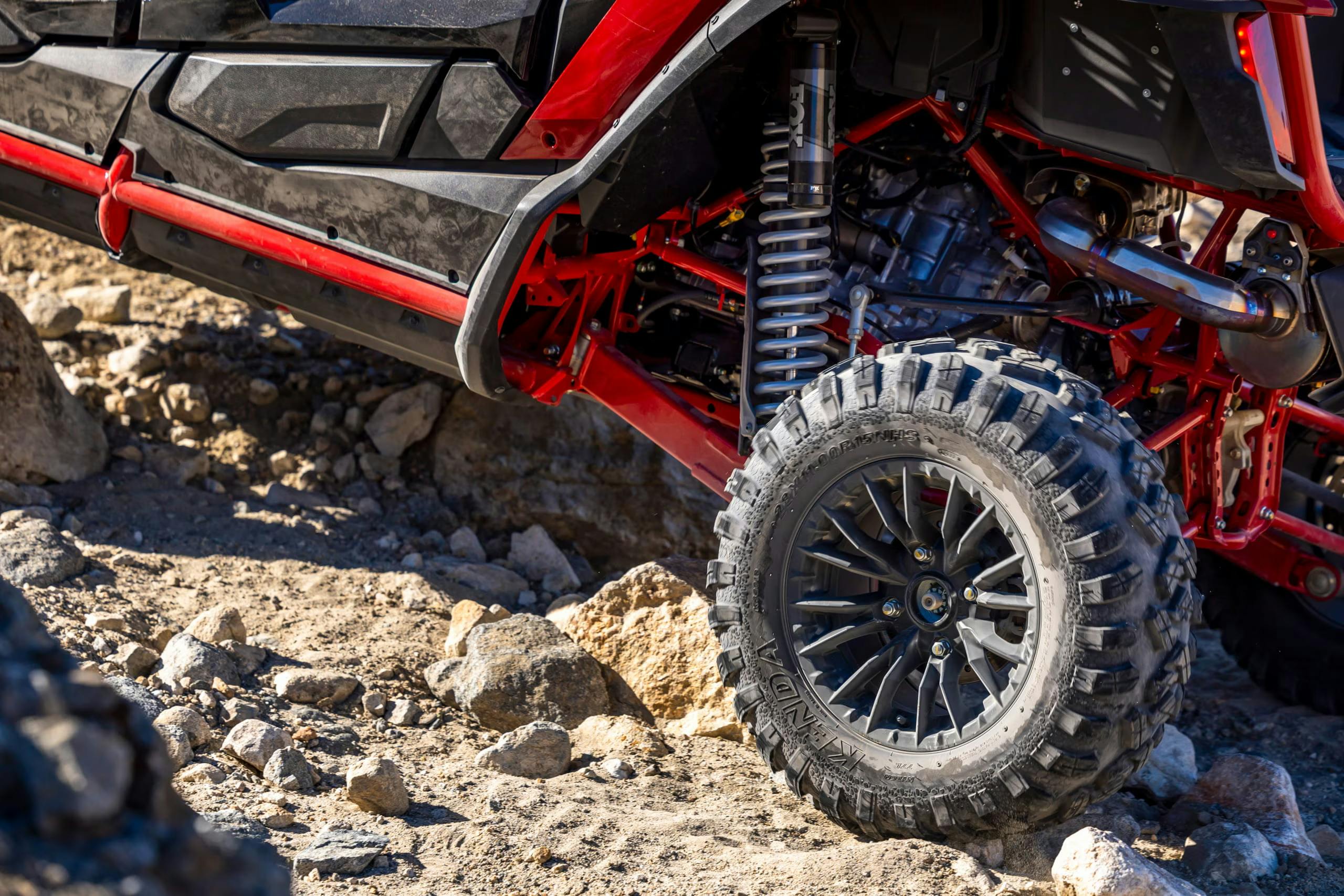
Why don’t I want it?
Interior quality is lacking. The Talon’s interior is basic, to be kind. Hard plastics, no frills. No dash touchscreen, dated-looking gauges. Fit and finish are fine, but material quality trails the industry average. This is an old rig, with few updates, and it feels old.
The Talon is built to a price and feels it. Like most Honda products, the Talon was designed and engineered to fit in the low-middle of the market. Even when it was new, this wasn’t a cutting-edge rig.
The factory wheel-and-tire packagestinks. Big 15-inch wheels, relatively short tires. With a recipe like that, pinch-flats are a virtual guarantee. The best thing you can do for any Talon, new or old, is order up a set of taller tires—as a plus, the greater rolling diameter of big-inch rubber helps smooth out the Talon’s jumpy throttle.
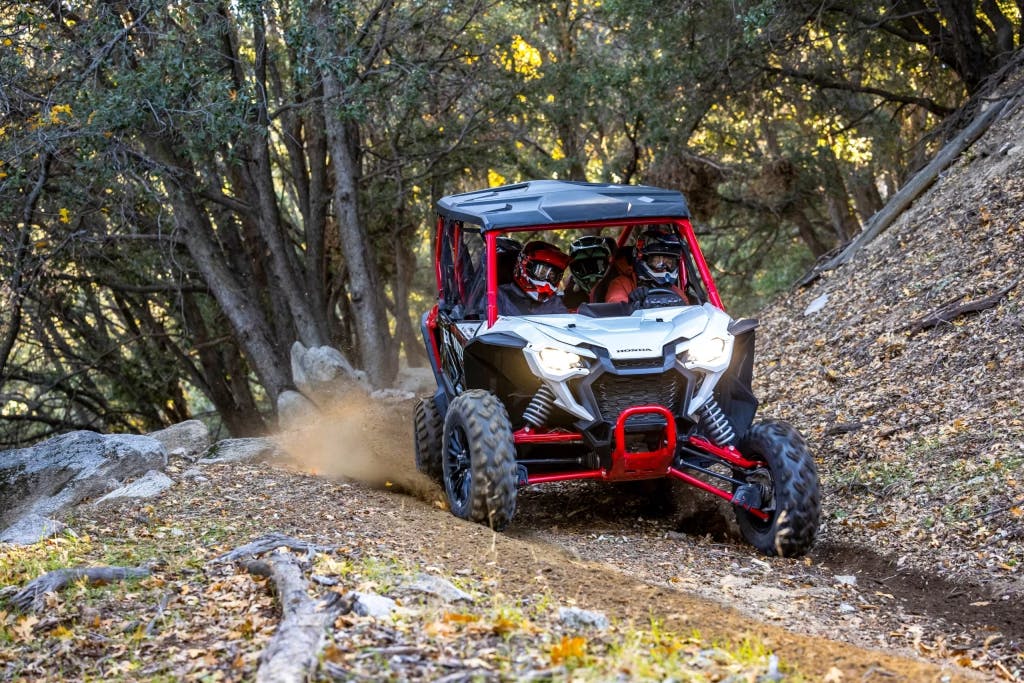
Which trim do I want?
For the 2024 model year, Honda offered the Talon in seven different trims. (Sound like a lot? For the ’25 model year, there are twelve different Talons.) Thankfully, in typical Honda fashion, those trims are relatively close to each other in price and spec.
When you get down to it, buying a ’24 Talon comes down to three choices: two or four seats, adaptive Live Valve shocks or no, and the girth you need. (No jokes!)
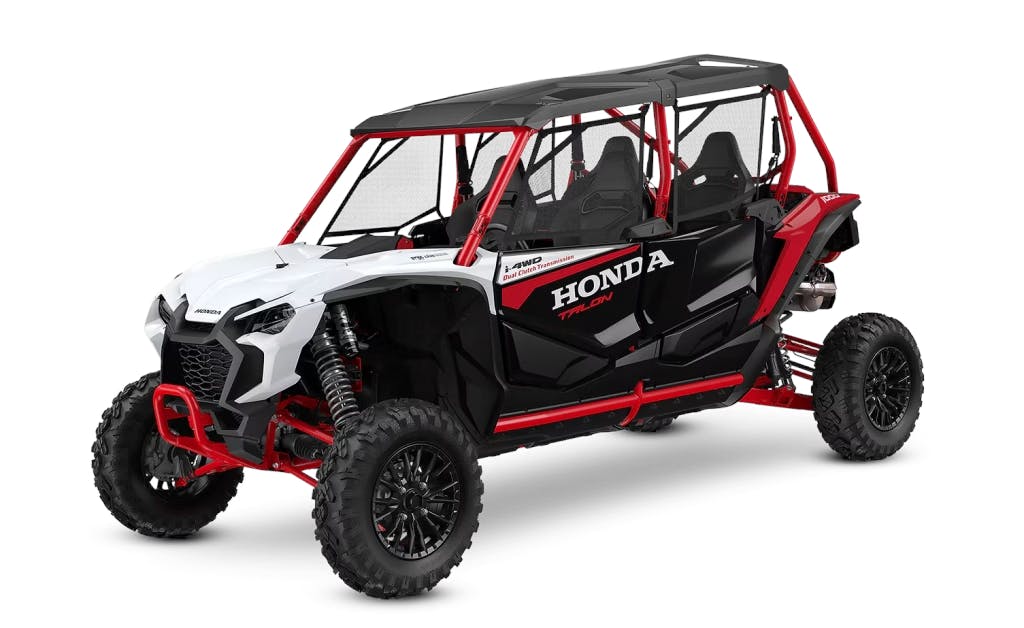
The first two questions in that list hang on budget. Seating choice is easy: Unlike a lot of side-by-side models, the four-seat Talon doesn’t feel noticeably larger than the two-seat variant, and it’s no more difficult fit down tight trails. If you can afford the four-seater, get the four-seater.
With the Live Valve option, the answer is simple: Live Valve is amazing, and what the Talon gives you for the cost of that option (around $25,000 including destination) is flat-out impressive. Adaptive-shock rigs from any manufacturer feel like a magic-carpet ride, and the Talon is no different.
Last but not least, there’s the question of girth. The Talon is available in two track widths—1000X models are 64 inches wide, while 1000R models measure 68 inches across. We’d pick the R. Even on tight East Coast trails, 68 inches across never feels too big, and there’s no real penalty for the choice. (Plus, with that narrow stance, the X models just look a little goofy.)
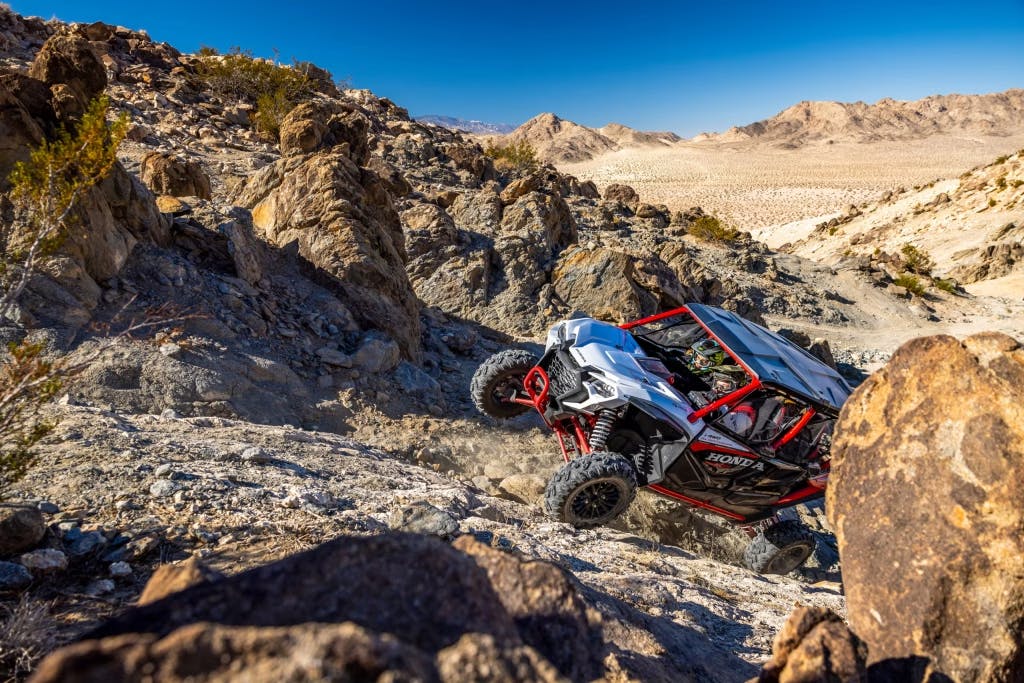
If I like this… what else should I look at?
Check out the Polaris RZR XP, the Can-Am Maverick X3 RS Turbo RR, and the Kawasaki KRX.
2024 Honda Talon 1000 Specs
NOTE: Four-door versions of the Honda Talon 1000 are sold with the suffix “-4” after the model name. (Talon 1000R-4, Talon 1000X-4, etc.)
Length: 123.7 in.
Width: 68.1 in. (1000R, 1000R Fox Live Valve) / 64.0 in. (1000X, 1000X Fox Live Valve)
Height: 75.8 in. (1000R, 1000R Fox Live Valve) / 75.6 in. (1000X) / 75.4 in. (1000X Fox Live Valve)
Wheelbase: 90 in. (1000R, 1000R Fox Live Valve) / 87.6 in. (1000X, 1000X Fox Live Valve)
Claimed Curb Weight: 1594 lb. (1000R) / 1587 lb. (1000R Fox Live Valve) / 1545 lb. (1000X) / 1552 lb. (1000X Fox Live Valve)
Engine: Unicam parallel-twin
Displacement: 999 cc
Transmission: 6-speed, dual-clutch automatic
Claimed Power: 105 hp
Claimed Torque: N/A
Fuel System: EFI w/ 46-mm throttle bodies
Steering: Electric power steering
Drivetrain: 2WD and i-4WD; direct shaft
Front Suspension: Dual A-arms w/ Showa (1000R, 1000X) Fox Podium 2.5 Live Valve (1000R Fox Live Valve, 1000X Fox Live Valve) shocks; 17.7 in. travel
Rear Suspension: Multilink trailing arm w/ SShowa (1000R, 1000X) Fox Podium 2.5 Live Valve (1000R Fox Live Valve, 1000X Fox Live Valve) shocks; 20.1 in. travel
Front Brakes: 250-mm hydraulic discs
Rear Brakes: 250-mm hydraulic discs
Wheels F/R: Cast aluminum; 15 in.
Tires F/R: Kenda 28×9-15 / 28×11-15
Bed Capacity: 299 lb.
Towing Capacity: N/A
Seating Capacity: 2
Ground Clearance: 13.2 in.
Fuel Capacity: 7.3 gal.
